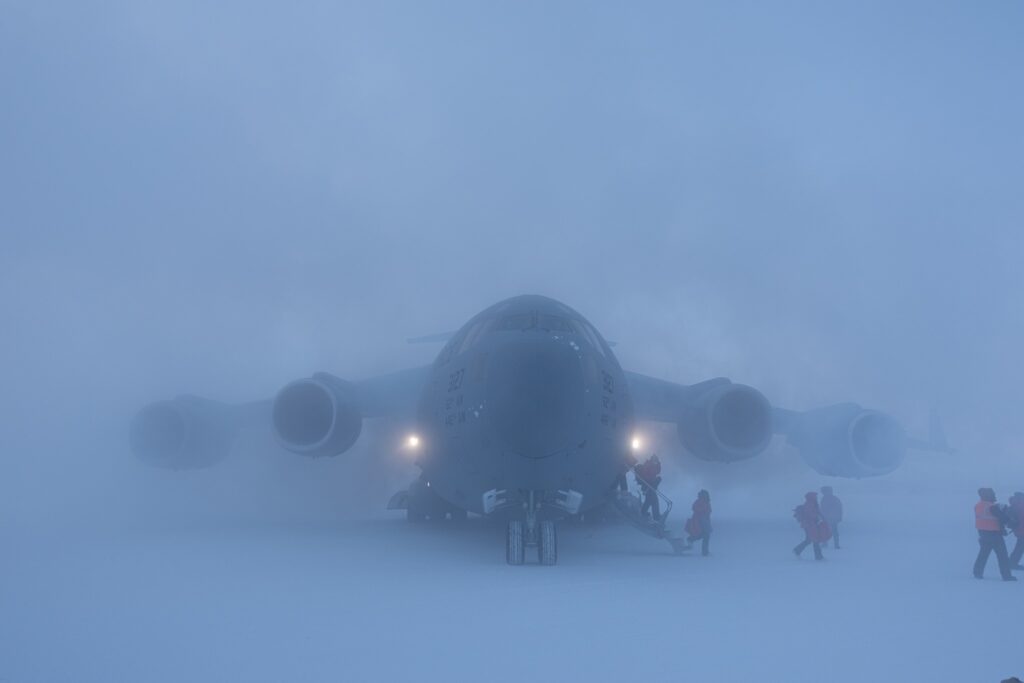Operation Deep Freeze is one the largest but lesser-known peacetime operations that the U.S. military conducts.
Every year, from August to March, the Air Force, Navy, AND Coast Guard conduct hundreds of sorties to Antarctica and the South Pole, transporting materiel, supplies, and people to the U.S. bases there.
During the 2020-2021 season, C-17 Globemaster III transport aircraft shouldered the majority of the load for Operation Deep Freeze.
More specifically, C-17 IIIs from the 446th and 62nd Airlift Wings delivered more than three million pounds of supplies and materiel, conducted two emergency aeromedical evacuations, and transported more than 1,000 people. Impressively, there was not even a single accident despite the hundreds of sorties. Indeed, Operation Deep Freeze is traditionally accident-free, with an ongoing 21-year streak without any major mishaps.
“I’ll certainly miss working with the staff and crew, and the Kiwi folks that work so hard in support of the Antarctic mission. Of course, flying over the continent of Antarctica never gets old. I won’t miss the cold though,” Chief Master Sergeant Ty Brooks, a loadmaster from the 313th Airlift Squadron, said in a press release.
“With all the changes and difficulties that had to be endured for COVID-19 operations this last ODF season, everyone involved was ready and willing to do what was asked of them for total mission success.”

Chief Master Sergeant Brooks knows a thing or two about Operation Deep Freeze. An Air Force Reserve troop, he has been participating in the exercise for almost 18 years.
The 446th and 62nd Airlift Wings are based out of Joint Base Lewis-McChord, Washington.
Operation Deep Freeze is an annual, recurrent operation that supports U.S. forces stationed in Antarctica and South Pole. Besides the US military footprint there, the National Science Foundation (NSF) also has a significant presence and is supported by Operation Deep Freeze.
“The difference this year was COVID-19. We had to send each rotation into New Zealand two-weeks early in order to do a two-week isolation. Once we were released from isolation and started flying the missions to Antarctica, we had to ensure anytime we were next to cargo or passengers that we had masks and gloves on. The United States Antarctic Program (USAP) and NSF did not want to take any chances on letting the virus enter Antarctica,” Senior Master Sergeant Thomas Emmert, the superintendent for Operation Deep Freeze from the 446th Operations Group, said.

Operation Deep Freeze has been going on since 1955. It is considered one of the toughest peacetime operations that the US military undertakes, mainly because of the treacherous environment.


